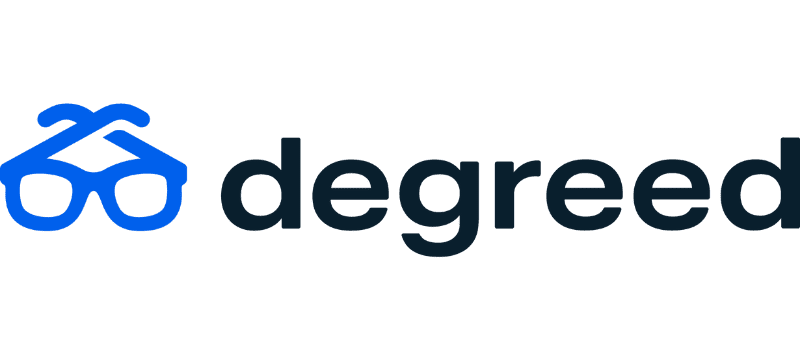Internal Mobility: Your key to a more adaptive organization
Learn how to build an inventory of your employees' skills and interests and how to then use that data to upskill them through mentoring, stretch projects, and other on-the-job experiences — not just content.
Career mobility is about getting deeper insights into the supply and demand for skills and matching employees' skills to new opportunities that make your company more competitive.
COVID-19 has accelerated the skills gap, fueled by remote workplaces and workforces.


A recent World Economic Forum study found that 42% of core skills in existing jobs will change by 2022, spurring the creation of 133 million new jobs.
Furthermore, 8 out of 10 CEOs say a lack of key skills is a serious threat to their growth. This shows that we should be preparing our workforces of today for the future..
What’s needed is a re-skilling revolution, which can be achieved through an internal career mobility strategy.
WATCH this webcast from UNLEASH and Chris Milligan, Degreed VP of Career Mobility, to explore how to build a skills-based culture where employees are at the center of your talent mobility strategy. Discover why a career mobility strategy is needed within your organization, how technology can support this, and what to look out for when choosing the right technology.
What our experts cover:
- Why talent retention is critical
- How to create a talent mobility strategy
- The value of a skill-based, people-first culture
- How to keep people competitive within your organization
Read more:
- Survival in a Tech-Driven World: Adaptability is only human
- An Adaptive Leadership Model Balancing Focus and Flexibility
- Carla Harris’ leadership pearls: Authenticity, trust, and clarity
Some of your questions answered:
Q. How do you quantify soft-skills? And how do you assess the very specific technical skills? This is all expensive and time-consuming, do you have any advice on how to achieve this in a more cost-effective way?
A. There’s a number of ways to quantify skills. We’ve developed our own way of quantifying skills on a rubric that we developed, helping to standardize that for an organization and have definitions per skill level. If we take a step back from that, skills can mean many different things to many organizations. So, what we want to be able to do is provide an evolving framework with machine learning and data science to understand what the skills are that people are developing, where the clusters are of people in similar roles, and what skills they’re working on, and actually start to infer who the experts at a certain skill are.
The next thing is then how we rate them or review them when there’s never going to be a recognized global verification for a singular skill. So, what we’ve started to do is integrate with many different assessment tools and providers to be able to apply that into an individual’s Degreed profile — which turns into their individual skills story. The other part of that is peer/manager review and starting to collect that feedback from the organization, and there’s a number of different ways we can think about that.
Then you can start to think about what skills are needed within the organization and assign those skills and levels in real-time, adjusting to fit demands from within the business. This creates an agile and real-time process of fitting skills to needs.
Q. What approach should an organization take in ‘inventorying’ the skills of people – where do you begin and how do you maintain it over time, and who should be responsible for that data?
A. That’s a question that even we are grappling with at the minute because it’s something that many different role titles within various organizations are coming to us with, stating they’ve been asked to look at their skills framework and where to even begin in some cases. I think what’s important is that it sits within HR. From a data perspective, obviously, organizations will have different setups from HR-IT versus data sitting solely within the IT function of an organization. But what we tend to see, certainly with using a SaaS application, that the data is really used more often by the function it sits in, so HR. What a lot of businesses are starting to do is partner with their IT teams and creating an internal reporting tool that actually looks at a lot of other things. Meaning it doesn’t just sit with your HR-systems, which is so important, especially when, as we’ve discussed, skills are the building block of an organization. Even if you’re not a people-centric business, it’s still people who are running the business.
In terms of where to start, what we did as an organization, was to look at what were the skills we have today. You can’t understand the gap or the deficit between where you are and where you want to be as a business unless you understand what you’ve got. That’ really where we recommend starting.
The data side of things comes down to your individual policies and practices but certainly it needs to have an understanding of how mission-critical it is to establish this to get your jobs done.
Q. Based on your experiences, what key high-level traits make for a robust talent mobility strategy between merging companies, to give cross visibility of opportunities to employees? Considering different geographies, benefits, etc.?
A. I think it’s important to first understand that the two companies will have different taxonomies and ways to define skills. So, firstly, we need to break down skills into definitions and a cross-section of labels that will enable two organizations to compare apples to apples, so to speak, and create a uniform logic to make comparisons with and map workforces against.
Then, we can provide an understanding of what skills we have as a collective so that we can better place employees and present this as an opportunity to our current workforce, as something we are doing to better place employees according to their skillset.
Making this visible to employees is a really powerful way to show good engagement but also give people the ‘why’. So part of it is the taxonomy, and the other part of it is the change in communication, which if done well can be very impactful.
Q. Due to COVID-19, skills have become a business-level issue. What advice would you give to an organization in terms of trying to get a seat at the table?
A. I would say that if an organization doesn’t have a handle on skills, then we don’t really know the skills of the workforce so we don’t really know if we can meet the strategy or be confident that we can meet the targets the executive team is setting. We do actually see this often missed when people ask us for help, they are doing it because they’ve been asked to, but they don’t actually understand the ‘why’. What’s the focus on career mobility going to drive?
Watch On Demand
"*" indicates required fields
Contact Us
"*" indicates required fields
Partner with UNLEASH
"*" indicates required fields
